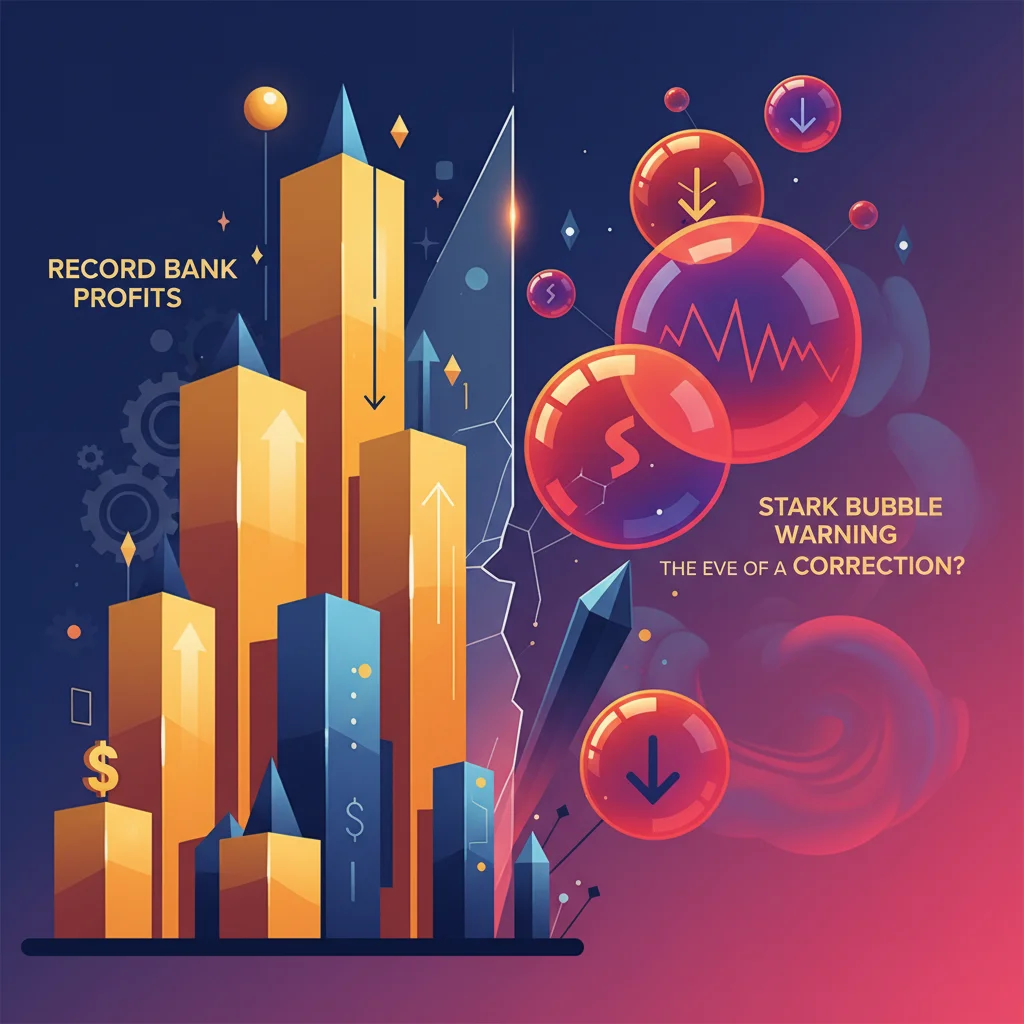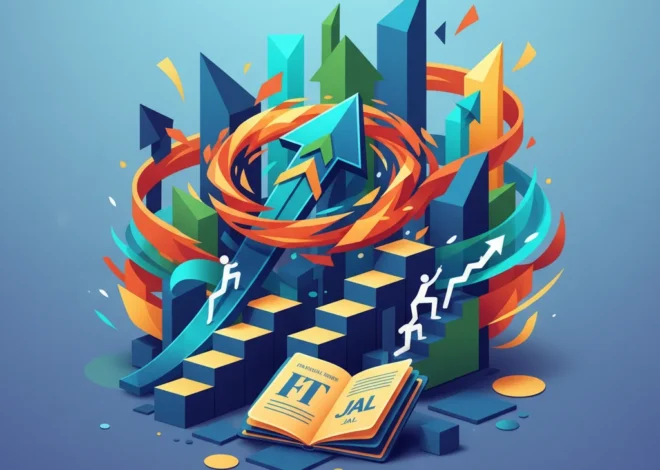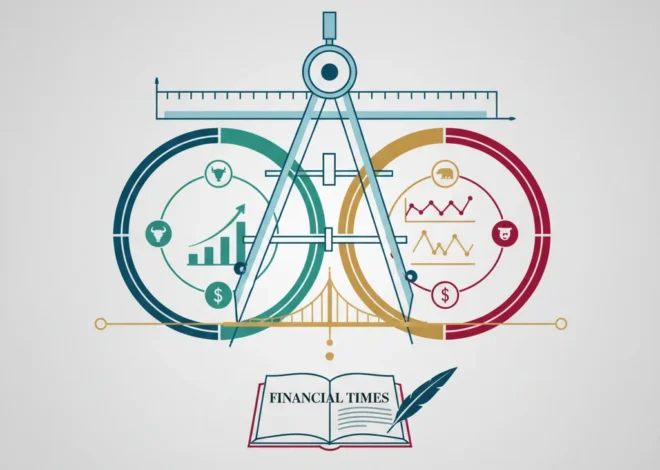
Wall Street’s Paradox: Record Bank Profits Meet Stark Bubble Warnings
The Roaring Twenties or the Eve of a Correction?
The latest earnings season on Wall Street painted a picture of immense prosperity, a scene reminiscent of a blockbuster film where the protagonists are showered in success. Giants like Goldman Sachs, JPMorgan Chase, and Citigroup unveiled quarterly results that didn’t just beat expectations; they shattered them. A surge in dealmaking and volatile trading floors fueled a profit machine running at full throttle. Yet, beneath the celebratory headlines, a chorus of caution emerged from the very leaders at the helm. The CEOs of these financial titans, the individuals with the most comprehensive view of the global economy, began to speak of “froth,” “speculation,” and markets approaching “bubble territory.”
This creates a fascinating and critical paradox for investors, finance professionals, and anyone with a stake in the economic landscape. How can the present be so profitable while the future is viewed with such trepidation? In this analysis, we will dissect the stellar performance of America’s leading banks, decipher the ominous warnings from their chiefs, and explore the profound implications for the stock market, the future of investing, and the broader financial ecosystem.
A Quarter for the Record Books: Unpacking the Numbers
To understand the gravity of the CEO warnings, we must first appreciate the scale of their success. The third quarter was, by many measures, an extraordinary period for investment banking and trading divisions. A global M&A boom, fueled by low interest rates and corporate confidence, created a torrent of fees for advisory services. Simultaneously, market volatility provided fertile ground for trading desks to generate significant revenue.
Here’s a comparative snapshot of the headline results from these financial powerhouses, showcasing the engine behind their performance.
| Financial Institution | Key Q3 Highlight | Driving Factor | CEO Commentary Snippet |
|---|---|---|---|
| JPMorgan Chase | Investment banking fees surged, climbing 45% year-over-year. | Record M&A advisory fees and strong equity underwriting. | Jamie Dimon noted the competitive threat from fintech and Big Tech is intensifying. |
| Goldman Sachs | Net profits reached $5.3bn, with investment banking revenue hitting its second-highest level ever. | Exceptional performance in M&A advisory and wealth management. | David Solomon warned of market “froth” and elevated asset prices. |
| Citigroup | Net income jumped 48% to $4.6bn, significantly beating analyst forecasts. | Strong performance in institutional businesses and a large release of loan-loss reserves. | Jane Fraser is navigating a major strategic overhaul while managing a strong but complex market. |
These figures represent more than just corporate success; they are a barometer of the global economic environment. The massive release of loan-loss reserves—funds set aside during the pandemic to cover potential defaults—signals that banks believe the worst of the COVID-induced economic shock has passed. However, this very optimism is what fuels the concerns at the top.
Heeding the Prophets of Wall Street: What “Froth” Really Means
When a figure like David Solomon, CEO of Goldman Sachs, uses a word like “froth” to describe the market, it’s not a casual remark. It’s a carefully chosen term to signal that asset prices, in his view, may be detaching from their underlying fundamental value. He, along with JPMorgan’s Jamie Dimon, pointed towards a landscape rife with speculation, where unprecedented levels of fiscal and monetary stimulus have inflated everything from equities to real estate and even digital assets.
So, what are the specific drivers behind these warnings?
- Unprecedented Stimulus: Governments and central banks globally have injected trillions of dollars into the economy to fight the pandemic’s effects. This liquidity has to go somewhere, and much of it has found its way into the financial markets, pushing prices higher.
- Persistently Low Interest Rates: With borrowing costs near zero, the classic “safe” investments like bonds offer paltry returns. This has pushed investors up the risk curve into stocks and other speculative assets in a phenomenon known as TINA (“There Is No Alternative”).
- Retail Investor Mania: The rise of commission-free trading apps and social media-driven investment trends has brought a new, powerful, and often speculative force into the market.
- Inflationary Pressures: The same stimulus and supply chain disruptions fueling corporate profits are also causing inflation to spike. The looming threat is that central banks, particularly the Federal Reserve, may be forced to raise interest rates faster than expected to cool the economy, an action that could prick any potential asset bubble.
The warnings from these CEOs are a crucial reminder that the current market environment is not normal. It’s an outlier shaped by historic interventions. As Jamie Dimon has consistently cautioned, the competition from nimble financial technology firms also represents a structural shift that traditional banks must navigate, adding another layer of complexity to the outlook (source).
The Fintech Disruption and the Future of Banking
Woven into the narrative of earnings and market warnings is the undeniable undercurrent of technological disruption. Jamie Dimon’s comments on the competitive threat from fintech and Big Tech are particularly salient. While traditional banks are posting record profits from their legacy investment banking and trading arms, a revolution is happening in consumer finance, payments, and wealth management.
Firms specializing in financial technology are unbundling banking services, offering slicker, cheaper, and more user-centric products. From digital payment platforms to robo-advisors and decentralized finance (DeFi) protocols built on blockchain, the very definition of banking is being challenged. The big banks are not standing still; they are investing billions in their own technology and acquiring fintech startups. However, this transition is a high-stakes race. The ability to innovate and adapt will be just as crucial to their future success as their ability to navigate market cycles.
Actionable Insights: Navigating the Paradox
So, how should one interpret these conflicting signals of record profits and dire warnings? The answer depends on your position in the financial world.
- For the Individual Investor: The message is one of caution, not panic. The CEOs’ warnings are a strong argument for discipline. This is a time to review your portfolio’s diversification, ensure you are not over-concentrated in speculative high-flyers, and reaffirm your long-term investment thesis. Chasing performance in a “frothy” market is a high-risk game.
- For the Finance Professional: The boom in M&A and capital markets activity may continue in the short term, but the landscape is shifting. An understanding of how technology, particularly fintech and blockchain, is reshaping finance is no longer optional. Furthermore, risk management and advisory services that help clients navigate uncertainty will be in high demand.
- For the Business Leader: The health of the banking sector is a proxy for the health of the economy. While credit is currently abundant, the warnings suggest that could change if central banks tighten policy. Now is the time to shore up balance sheets, stress-test business models against higher interest rate scenarios, and focus on sustainable, long-term growth rather than short-term market sentiment.
The current moment in finance is a delicate balancing act. The tailwinds of stimulus and reopening are powerful, but the headwinds of inflation and potential policy shifts are gathering strength.
Conclusion: A Time for Prudence Amidst Plenty
The Q3 earnings season of Wall Street’s titans was a testament to their resilience and ability to capitalize on an unprecedented economic environment. The profits are real, and the deal flow is historic. Yet, the wisdom of their leaders lies not in celebrating the present but in preparing for the future. Their collective caution is a valuable gift to the market—a signal to look beyond the dazzling numbers and consider the underlying risks.
The story of the current market is one of a grand paradox. We are simultaneously witnessing incredible wealth creation and hearing credible warnings of its unsustainability. Navigating this landscape successfully will require a blend of optimism in human ingenuity and a healthy respect for the historical patterns of economics and market cycles. The party on Wall Street is still going, but the most experienced guests are already starting to look for the exits.


